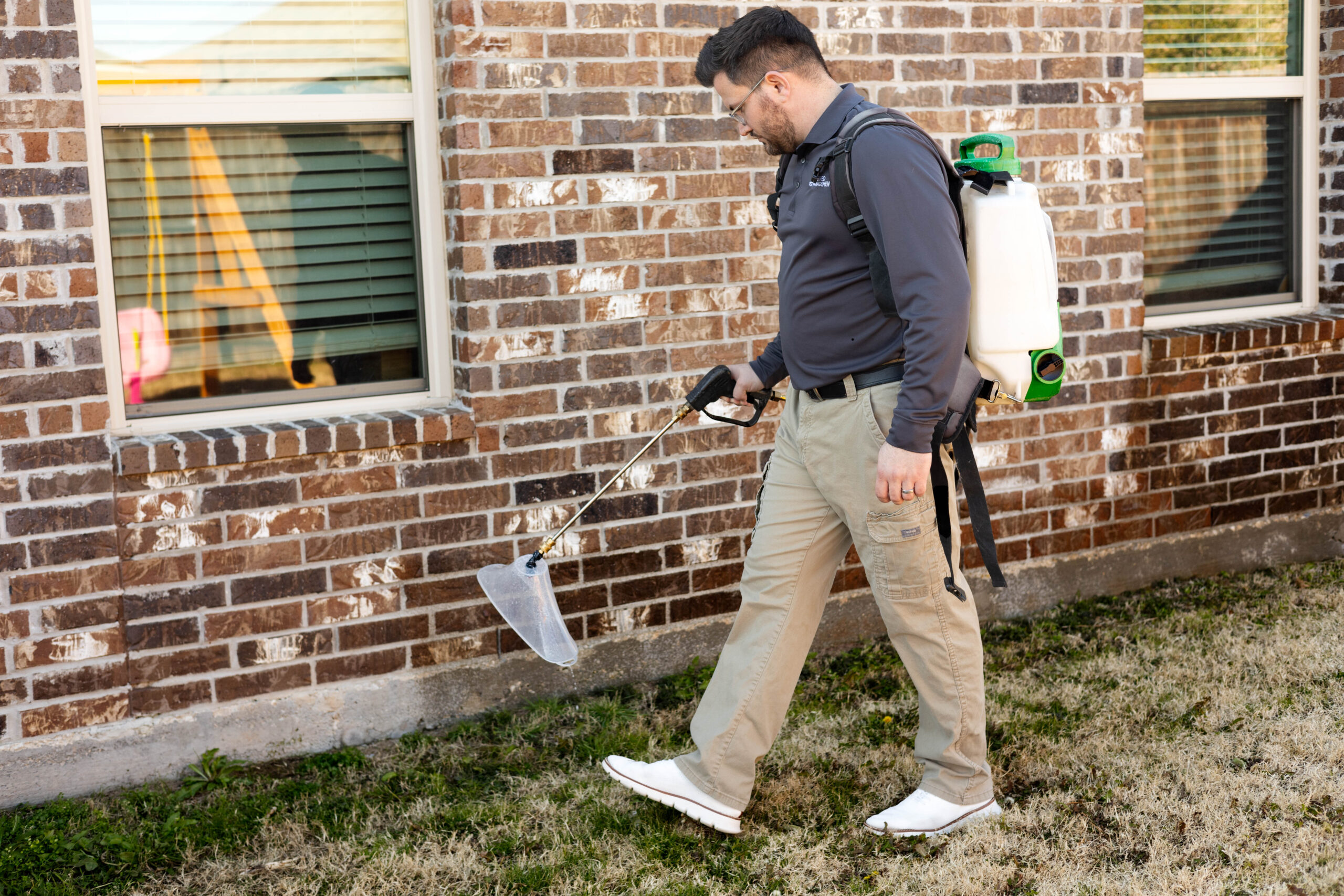
Top-Rated Safe and Effective Pest Control Services in Plano, TX
Serving both residential and commercial properties across Plano and the greater Dallas area, Preferred Pest Management delivers precision-targeted pest control solutions designed to eliminate, protect, and prevent — with unmatched accuracy and care. Whether you’re battling rodents, termites, or seasonal invaders, our expert team is equipped to defend your space with fast, effective service you can trust.
Pest Control Service Plans Start As Low As $39/mo: Call Now For Your Personalized Quote
Why Choose Us For Pest Control in Plano, TX?
When it comes to pest control in Plano, TX, there is one company that stands above the rest: Preferred Pest Management. Since our establishment in 2020, we have quickly gained a reputation as the best pest control company in the area,earning 125+ 5-star reviews from our satisfied customers.
At Preferred Pest Management, we are committed to delivering exceptional service and achieving complete customer satisfaction.
Our team of highly skilled professionals is equipped with the knowledge, expertise, and cutting-edge tools necessary to tackle any pest challenge you may face.
Call us now to get your personalized pest control quote at 214-978-3877
Get a Pest Control Quote
Our Pest Control Plans
At Preferred Pest Management, we have a service for everyone’s needs. Here are a couple of our most popular pest and termite control plans for homeowners in Plano.
Control Good Starter Plan That Covers Over 16
General Pests
Quote
- Includes coverage carpenter ants & more
- Preferred Guarantee 365
- Dewebbing and wasp removal
- Auto schedule takes stress away
Termite Control For Home & Business Owners
Protect Your Investment
Quote
- Everything in Preferred Pest Control
- Active Termite Baiting System
- 365 Termite Warranty
We Are The Most Dependable Pest Control Near You
Located about 30 minutes from Dallas, Plano is an affluent suburb that is quickly becoming a center of business in North Texas. The recent influx of major business headquarters definitely speaks to that fact.
It is also one of the fastest appreciating real estate markets in the U.S. due to the number of people relocating for jobs here. Unfortunately, the pest population is also rising in the area along with the human population. Some of the most common pests in Plano, TX, are termites, mosquitoes, bed bugs, roaches, rodents, ants, and bees.
If any of these common pests have invaded your home or business property, give Preferred Pest Control a call today and let our team of highly-trained pest control professionals help them find their way out!

Why Choose Us For Pest Control Services?
What sets us apart from the competition is our unwavering dedication to providing effective and long-lasting pest control solutions. We understand that pests can disrupt your daily life, pose health risks, and damage your property. That’s why we go above and beyond to ensure that your home or business is pest-free and protected.
Our comprehensive approach combines the latest industry techniques, environmentally friendly practices, and personalized strategies to address your specific pest control needs. We meticulously inspect your property, identify the root causes of the infestation, and develop a tailored treatment plan that eliminates pests and prevents their return.
But don’t just take our word for it—our numerous 5-star reviews speak for themselves. Our valued customers in Plano, TX consistently praise our exceptional service, professionalism, and the outstanding results we deliver. We take great pride in the trust and satisfaction we have earned from the community we serve.
When it comes to pest control in Plano, TX, there is no better choice than Preferred Pest Management. Contact us today to experience the top-tier service that has garnered us a reputation as the best pest control company in the area. Let us protect your home or business from pests and provide you with the peace of mind you deserve.
Our Plano Pest Control Services
At Preferred Pest Management, we take pride in being the go-to choice for pest control in Plano, TX. Our services are tailored to the unique pest pressures of Collin County and North Dallas suburbs, backed by local knowledge and personalized care. Whether you’re dealing with seasonal infestations, lawn pests, or nuisance wildlife, we have a proven solution.
We don’t just spray and leave—we educate Plano homeowners, monitor trends, and use strategic methods to reduce pesticide usage while maximizing results. Here’s what we offer:
🕷️ General Pest Control
Plano neighborhoods like West Plano, Chase Oaks, and Willow Bend often experience year-round pest pressure due to urban development and nearby greenbelts. Our general pest control service targets:
- Ants, roaches, spiders, earwigs, and silverfish
- Entry-point sealing and perimeter protection
- Seasonal monitoring and proactive barrier treatments
We offer monthly, bimonthly, and quarterly plans for both homeowners and small businesses, all backed by a 100% satisfaction guarantee.
🦟 Mosquito Control
Plano’s warm climate and active outdoor lifestyle make mosquito control a must—especially in neighborhoods near Bob Woodruff Park and Arbor Hills Nature Preserve.
- Fogging and larvicide treatments
- Standing water reduction strategies
- Seasonal programs with monthly visits from April–October
Perfect for families who want to reclaim their backyard or safely host events.
🐭 Rodent Control
From older homes in Downtown Plano to new builds near Plano ISD campuses, rodents can quickly infiltrate attics, walls, and garages.
- Humane trapping and exclusion services
- Rodent-proofing inspections and sealing
- Ongoing baiting and monitoring if needed
We use infrared technology and attic inspections to locate nesting zones.
🐛 Termite Control
Plano homes—especially those built before the 2000s—are at risk for termite infestations due to foundation cracks and untreated soil.
- Free inspections and WDI (Wood Destroying Insect) reports
- Preventative bait stations and spot treatments
- Long-term protection plans with annual renewals
We’re licensed and insured to treat both slab and pier-and-beam foundations.
🐶 Flea Control
Fleas are a major concern in Plano, especially for homes with pets and shaded backyards. We offer:
- Pet-safe indoor and outdoor treatments
- 90-day warranty
- Integrated advice for treating pets and bedding
Flea infestations require a 3-part approach, and we guide you every step of the way.
🦝 Wildlife Control
Plano’s proximity to creeks and wooded areas means wildlife intrusion is common in Ridgeview Ranch and Whiffletree.
- Humane raccoon, squirrel, and opossum removal
- Entry-point sealing and exclusion
- Attic remediation and odor removal
We’re also compliant with local wildlife handling laws and always opt for non-lethal removal when possible.
🐜 Ant Control
Plano lawns often suffer from fire ants and carpenter ants, especially in high-irrigation zones like HOA communities and parks.
- Yard granules and mound treatments
- Interior baiting systems
- Long-lasting, kid- and pet-safe solutions
We tailor ant control based on species and seasonal behavior.
🌱 Weed & Fertilizer Services
In neighborhoods like Kings Ridge and Glen Meadows, healthy turf is key to curb appeal. We offer:
- 7-step weed & fertilizer programs
- Pre-emergent and post-emergent weed control
- Lawn-safe pest control add-ons for grubs and chinch bugs
All services are overseen by licensed techs with knowledge of local turf types like Bermuda and St. Augustine.
To get started, call 2149783877 or request a quote online!
Neighborhoods We Proudly Serve in Plano, TX
At Preferred Pest Management, we proudly serve homeowners and businesses throughout all areas of Plano. Below are some of the most common neighborhoods we work in—along with what makes each unique when it comes to pest control challenges:
🏡 West Plano
From executive homes to tree-lined estates, West Plano homeowners value discreet, effective service. We provide general pest control and rodent exclusion to address common attic invaders and backyard pests.
🗺️ View West Plano on Google Maps
🏡 Willow Bend
Luxury homes with high irrigation systems often face ant and mosquito issues. We frequently perform ant control and mosquito treatment near the Gleneagles Country Club.
🌳 Explore Gleneagles Country Club
🏡 Chase Oaks
Known for homes near Chase Oaks Golf Club, this area is prone to mosquito activity due to nearby water and vegetation. Our mosquito control program is a top choice here.
🏡 Ridgeview Ranch
Many homeowners here request wildlife removal due to raccoons and squirrels around greenbelts and the golf course.
🏡 Whiffletree
Classic Plano homes with mature trees often require quarterly general pest and termite prevention services due to age and layout.
🏡 Kings Ridge
With its newer construction and HOA-maintained lawns, flea treatments and lawn pest control are most common here.
📌 Kings Ridge Neighborhood Overview
🏡 Glen Meadows
We frequently perform termite inspections and rodent exclusions for homes near local schools and parks.
🏡 Avignon Windhaven
Located near the Arbor Hills Nature Preserve, this neighborhood tends to deal with wildlife activity and mosquitoes. We offer wildlife control and customized mosquito services here.
